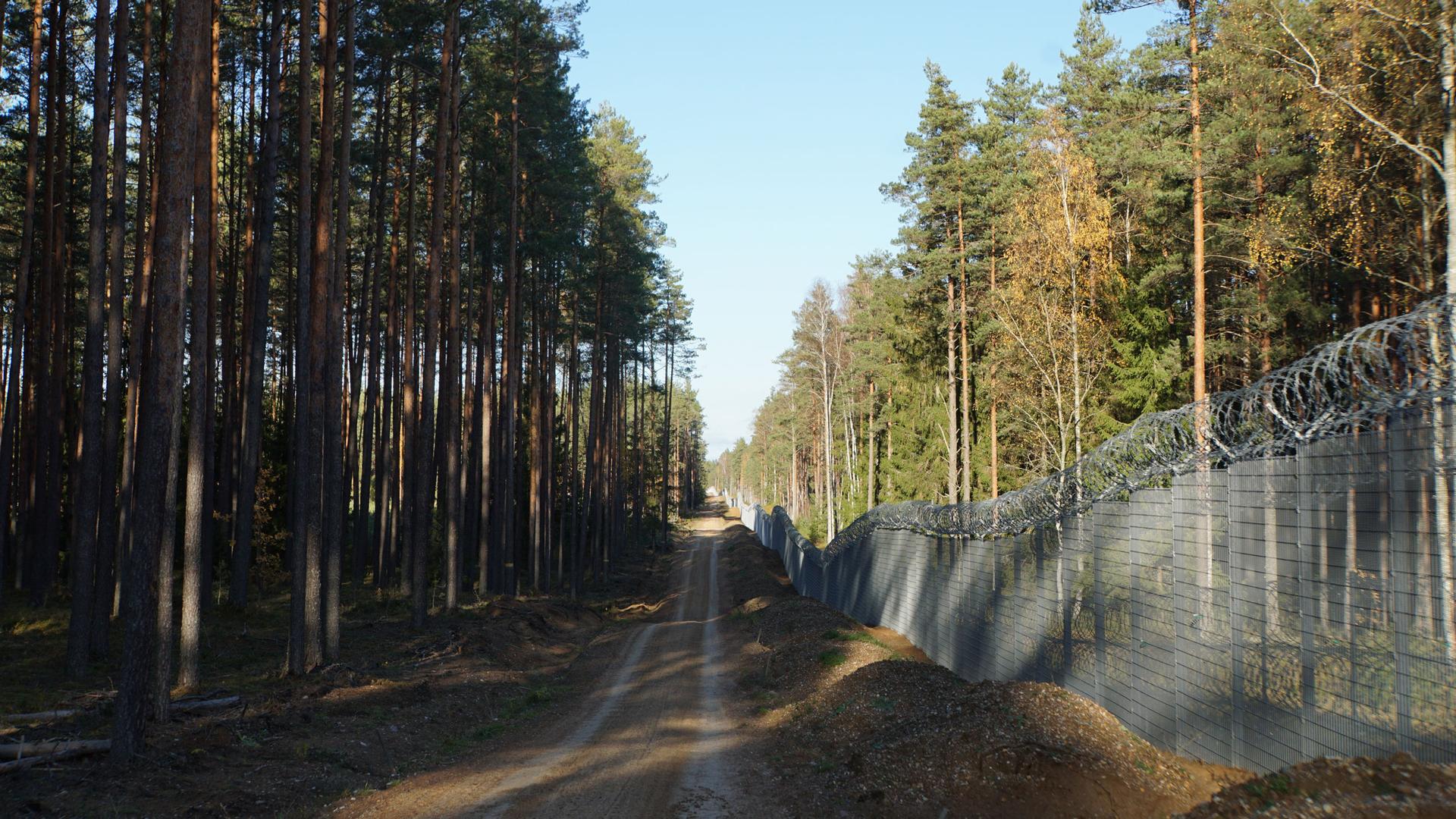On a recent day at a border surveillance station in southern Latvia, Vladimirs Šersts and other officers are monitoring and detecting border crossings at the Latvia-Belarus border.
About a half dozen officers monitor multiple screens that show live feeds of the 100-mile-long border area between the two countries, separated partially by a fence.
“As you can see, we have two fences,” said Šersts, who has worked with Latvia’s border protection service for more than a decade.
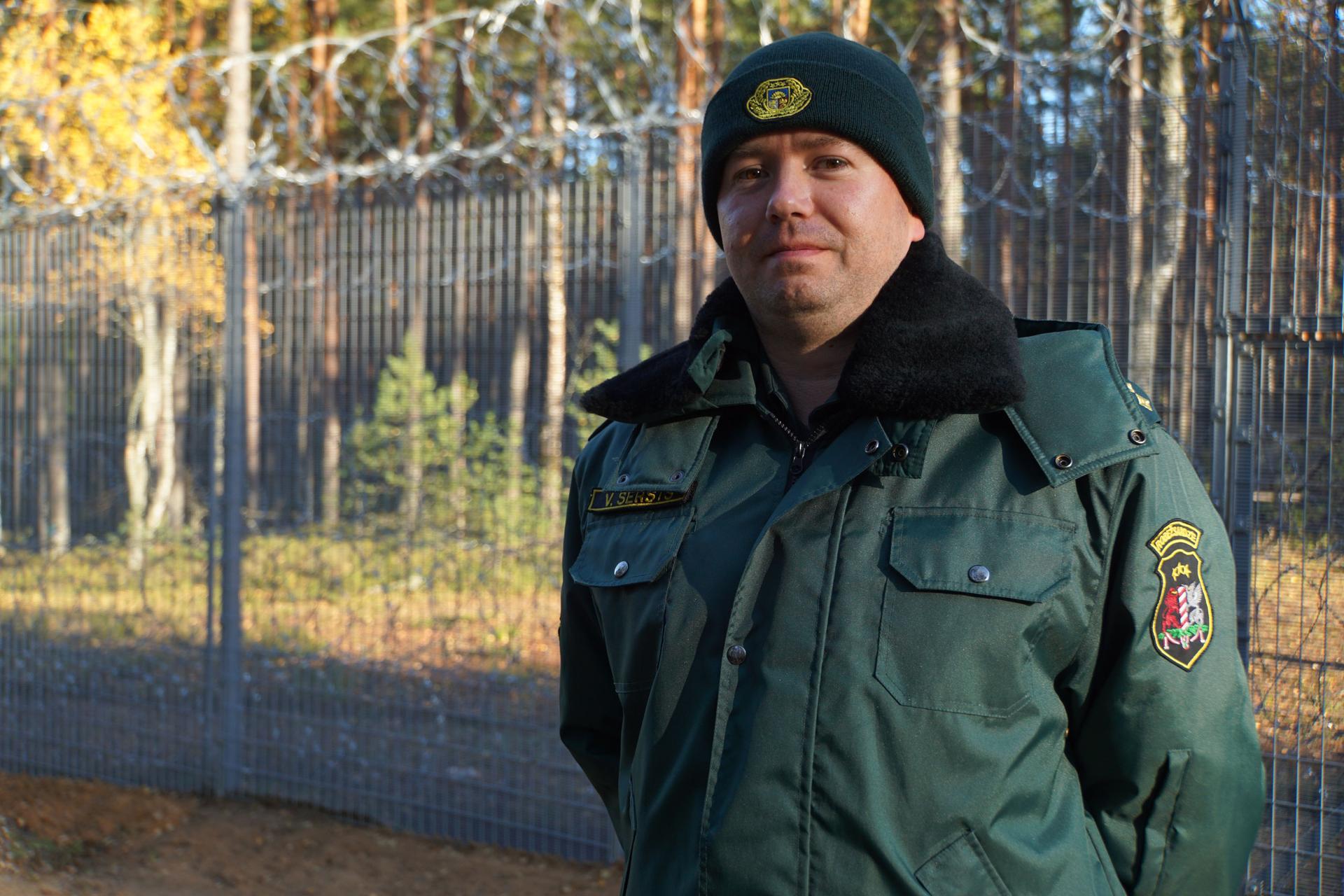
The first fence was temporarily erected in response to an uptick in migration in 2021. The new fence is larger and takes protection to the next level, he added.
In recent months, thousands of migrants from all over the world have been arriving at the Belarus border with European Union countries like Poland, Lithuania and Latvia.
Most Western countries blame the Belarusian strongman leader Alexander Lukashenko for orchestrating the unfolding crisis that began in 2021.
Lukashenko, however, has denied these accusations.
“If you’re accusing us of helping the migrants enter the EU, put the facts on the table,” he said in a recent BBC interview.
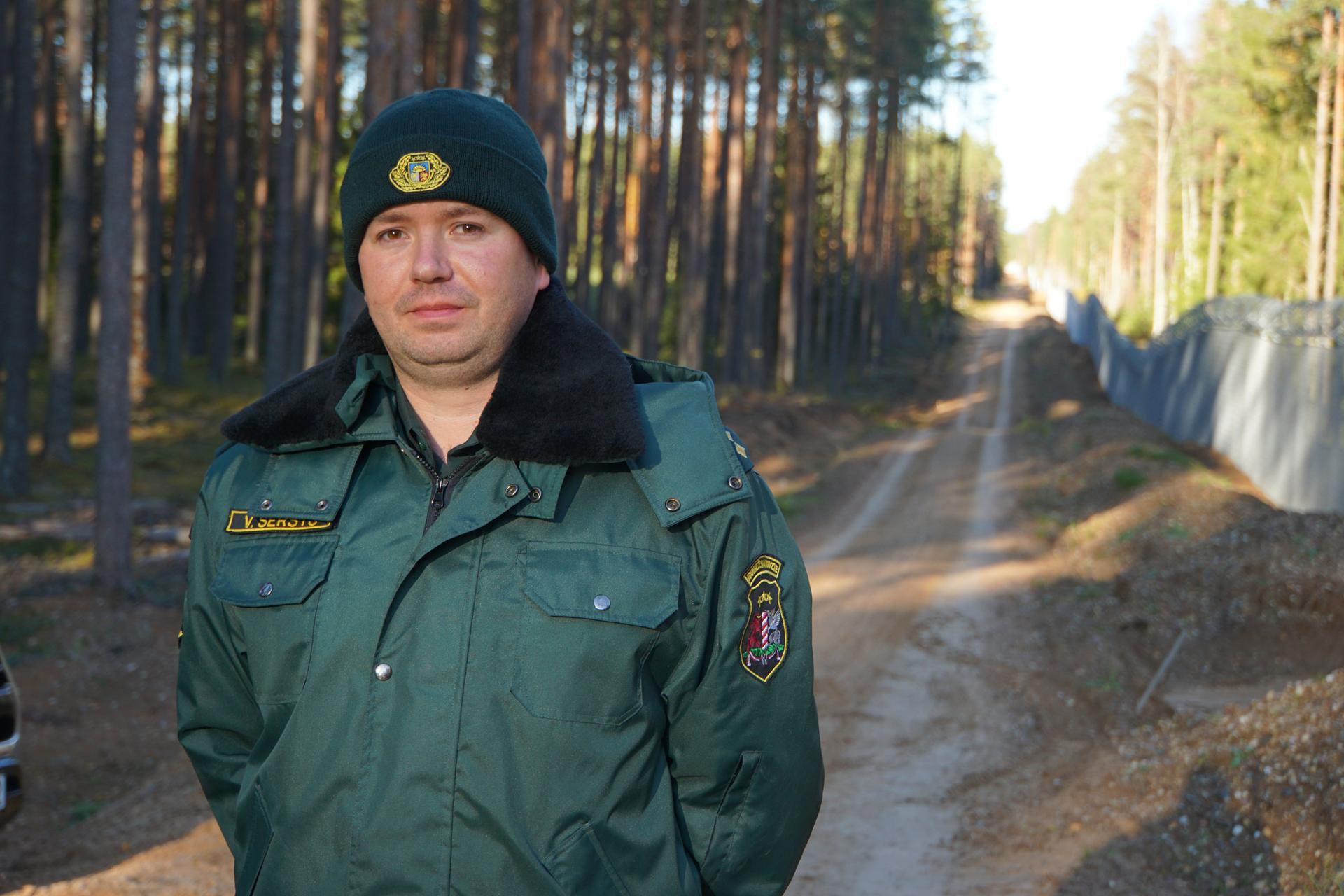
But Marija Golubeva, a fellow with the Center for European Policy Analysis, said Lukashenko’s migration scheme was quite intentional.
The European Union does not view Lukashenko as the legitimate president of Belarus.
Golubeva said that following extensive EU sanctions against Belarus, Lukashenko began lashing out.
“There is an element where one person’s interest becomes, to some extent, state interest,” she said.
According to Golubeva, Lukashenko’s scheme is simple: Migrants are flown into Minsk, the Belarusian capital. Then, they’re transported to the border with EU states. In more recent months, though, most of the migrants first make their journey to Moscow before traveling to the Latvia-Belarus border.
“This is a hybrid threat, this is a hybrid attack, it’s not just migration business as usual,” said Golubeva, who also served as the former interior minister for Latvia.
“It’s a very clever way of making life difficult for the EU and for specific member states that have especially welcomed Belarusian opposition.”
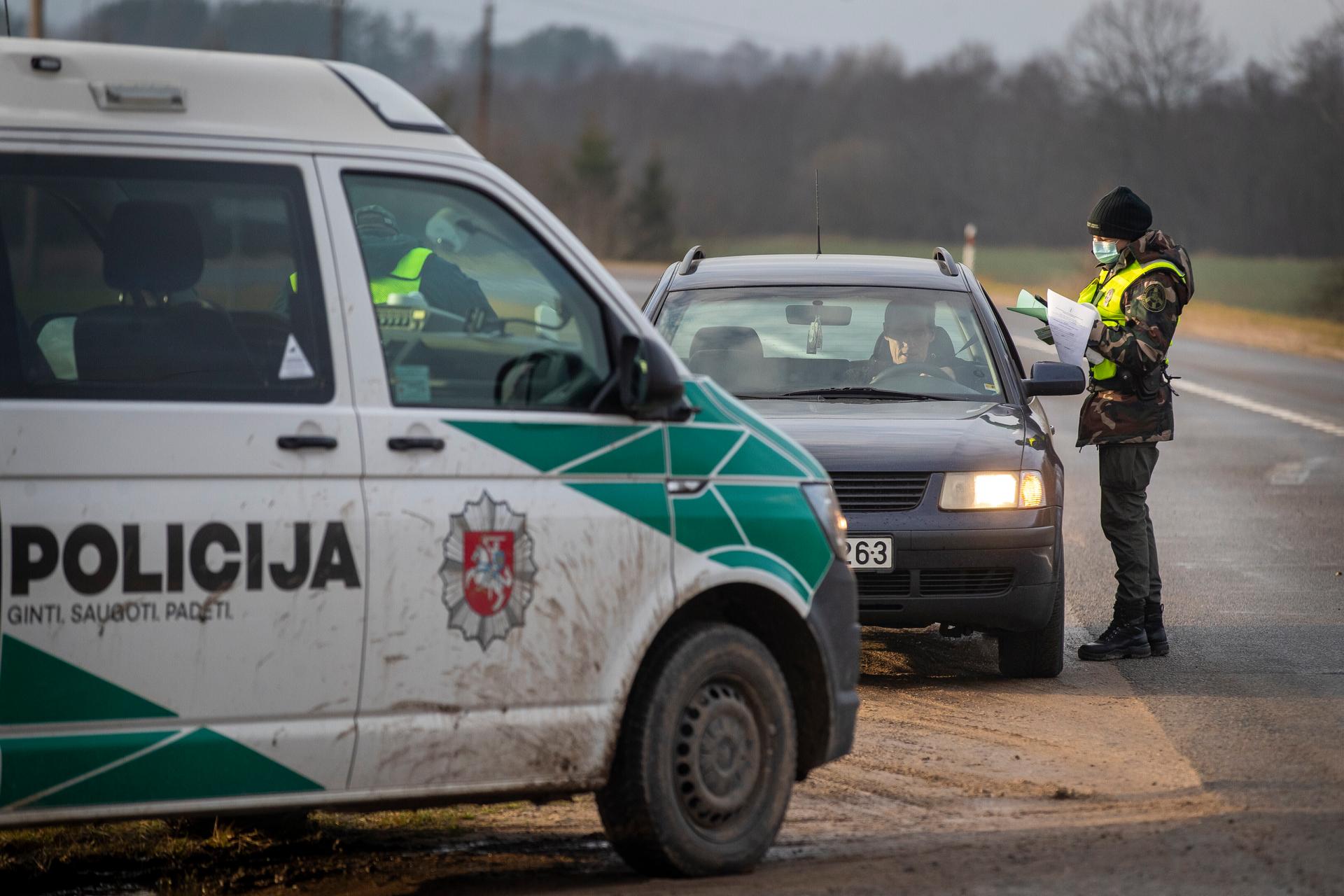
Anna Grike, who works directly with migrants through the Latvian nongovernmental organization Gribu Palīdzēt Bēgļiem (I Want to Help Refugees) said she doubts the migrants’ journey to the Latvia-Belarus border is purely part of a “hybrid attack” on European Union countries.
She said migrants seek out what’s known as the “eastern route” for one main reason — it’s safer.
“… It is said to be a little bit safer than, for instance, the one crossing the Mediterranean,” she said. “It involves the risk to die, or to go missing, but still it is said to be a little bit safer.”
“These are mainly people who arrive from such countries as Syria, Afghanistan, Iraq, Iran, Democratic Republic of Congo, now also Sudan, Somalia, Eritrea, Ethiopia,” Grike said.
“As you already can imagine, these are countries where there are some active conflicts, so of course their motivation is to flee something, and they are not fleeing from a good life, this is for sure,” she added.
The journey is grueling. Many migrants get lost in the forest. During the fall and winter, the temperature can drop to below freezing. There have been documented cases of migrants dying.
Grike and other volunteers used to be able to help migrants at the border, but now they work with border guards to provide food, water and warm clothes.
They also help migrants who are sent to Latvian detention centers.
“We carry out monthly activities with the detained people, we touch upon their asylum procedure, how it’s going, whether they need some additional legal assistance or not or how is your everyday life,” she said.
In most cases though, non-Ukrainian migrants are not granted asylum. Usually they’re caught and simply pushed back into Belarus. They don’t have the same protected status as Ukrainians.
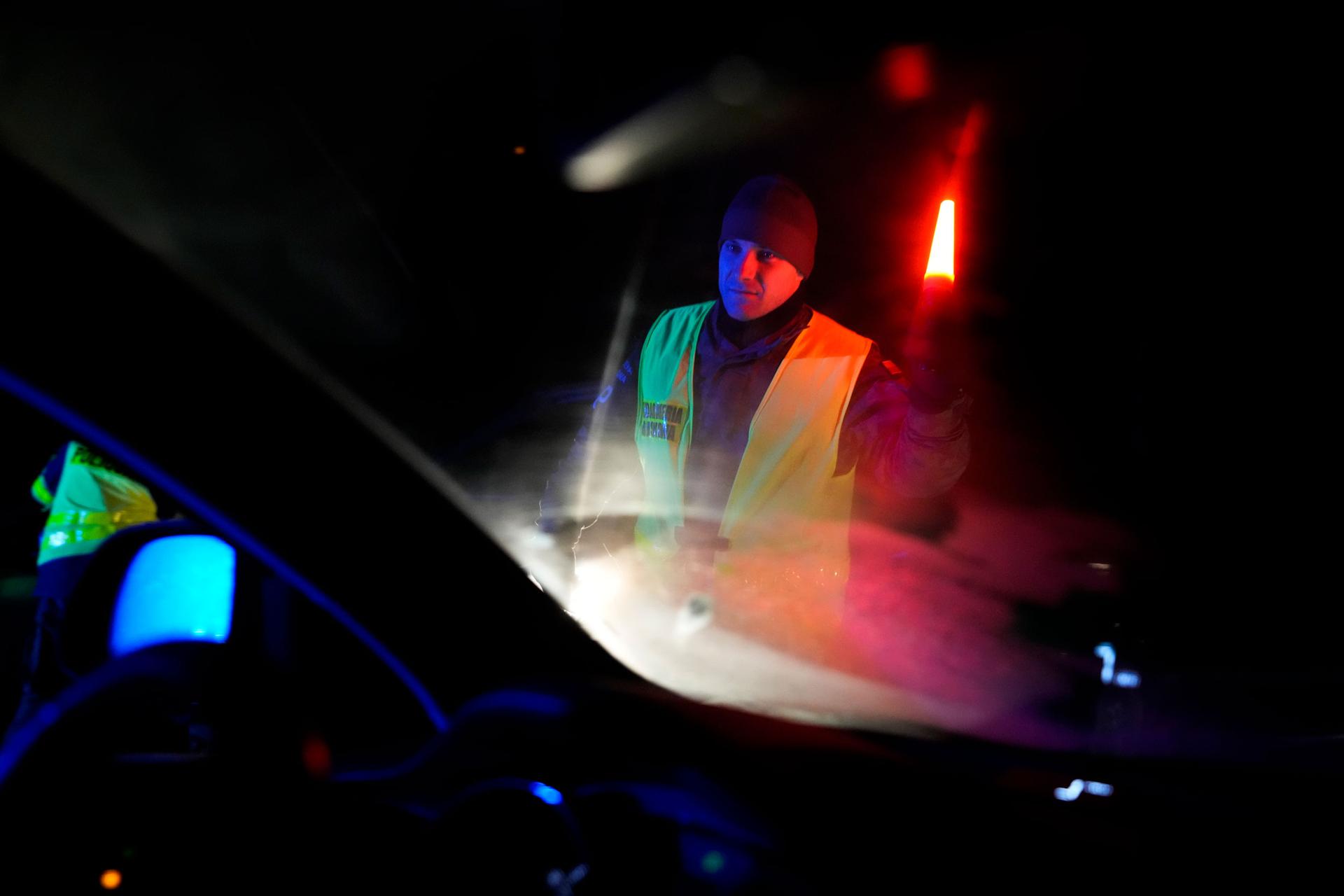
Still, migrants from all over the world keep coming. In recent months, Latvian officials have recorded record numbers of attempted crossings.
On one side of the border, a signpost holds a Latvian flag. On the other side, the Belarusian flag. Movement between the two countries used to be very common.
Now, only one legal border crossing remains open.
“Russia and Belarus, I can say it’s one country now, under one dictator,” Šersts, the border surveillance officer said. “It’s like one step and you are in another world.”
He said the two countries went from being friends to not quite enemies but more like “fighting neighbors.” The deteriorating relationship between the two countries has exacerbated the situation at the border, Šersts added.
Grike, who works directly with migrants, said that no matter the political situation, Latvia has to act responsibly and not simply push migrants back across the border.
“We can evaluate each and every person’s status whether the asylum could be granted or not,” Grike said.
Migrants can usually apply for asylum by submitting an application to any border officer.
But that has not been the case on the Latvian-Belarus border. According to Grike, the process is now arbitrary and it remains unclear who is allowed to apply for asylum.
The current situation is, of course, politicized, she said. “If we respond as if we are in war, by deterring people and them becoming our victims of this war, this is the current response — and I would suggest we can do it in a different way.”
Grike said a good starting point is for the state to be more transparent about the asylum process and to evaluate each individual on a case-by-case basis.
